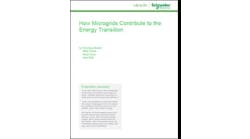Thanks to big data, utilities and energy service companies are improving their ability to pinpoint energy efficiency opportunities and achieve savings for their customers.
That was the message delivered this week by a panel of experts, chaired by EnerNoc’s Greg Winkler, at the fall conference of the Association of Energy Services Professionals in Seattle.
Big data offers tremendous improvement over metrics traditionally used to uncover energy savings, like the Energy Use Index of commercial and industrial buildings. As FirstFuel Software’s Domenic Armano explained, EUI is only one piece of the story. EUI’s shortcoming? It often does not correlate to the 25 percent of buildings that represent 75 percent of the energy efficiency savings, he said.
Big data programs, on the other hand, look at millions of data points and give utilities and ESCO’s the ability to identify energy savings in buildings across a greater scale at a lower cost.
Richard Huntley from Retroficiency pointed out that if every energy auditor in the US worked around the clock, it would take 22 years to audit every building in the country and cost $50 billion. Using big data speeds up the process tremendously.
Cleary big data solutions can help utilities, ESCOs, Real Estate Investment Trusts, and commercial property managers find the 30 percent of the building in their portfolios that offer 70 percent potential savings, Huntley said. Manual audits will not go away – but big data will help the industry find the best opportunities, especially as more small and medium buildings seek retrofits. Big data software also is critical in more comprehensive energy efficiency audits, programs that go beyond lighting, HVAC, and plug loads, he said.
Navigant’s Brian Eakin offered some high level thoughts about planning for your big data program. He outlined three pillars: People, Process and Technology.
- People refers to the internal and external stakeholders, as well as partners and customers. What information is expected from these parties?
- Process takes into consideration things like your data management plan. What are the volumes and variety of data to be collected and analyzed? What are the data security needs, and who gets access to what data? In some cases, an evaluator needs access to certain data, such as customer address and perhaps usage. Yet clearly, other data must be restricted from view, such as a customer’s credit card data.
- Technology is perhaps the most challenging aspect. With so much data from internal and external sources, spreadsheets and relational databases are often inadequate. Eakin suggests engaging your IT department early in the process.
The explosion of information from smart meters, sensors, internal and public data sources creates a wonderful opportunity to enhance the effectiveness of energy efficiency programs. Clearly a good big data strategy offers competitive advantages.
Did you find this information interesting? Then, check out the AESP 24th National Conference, planned for Jan. 27-30 in San Diego, Calif.






